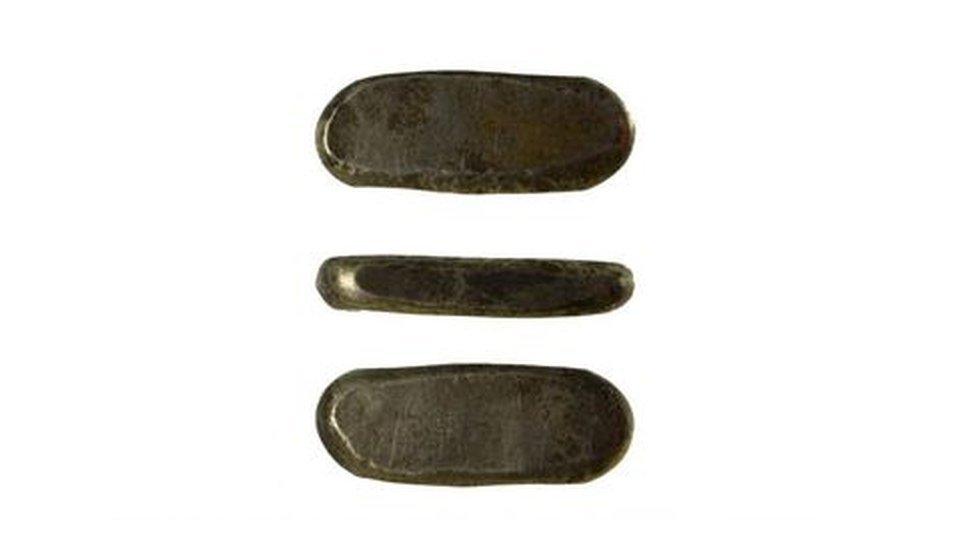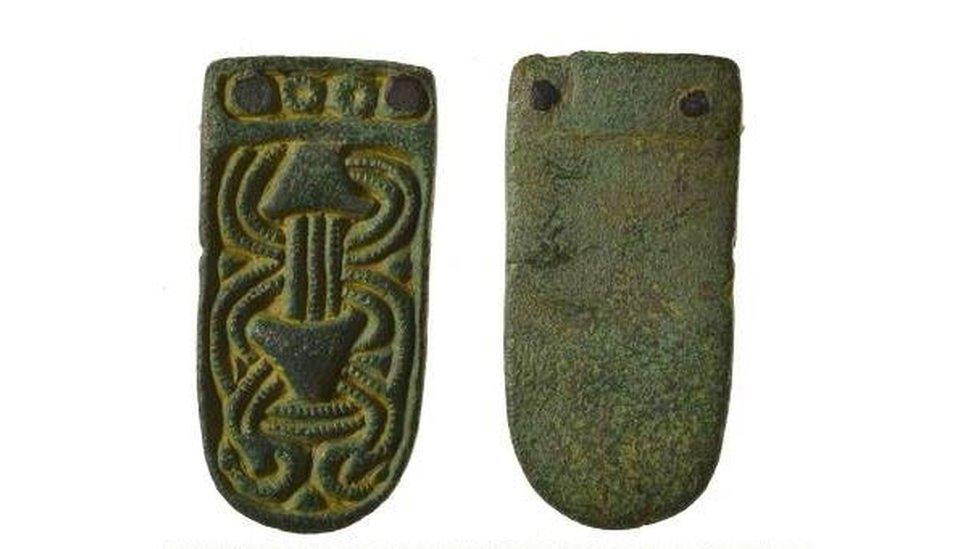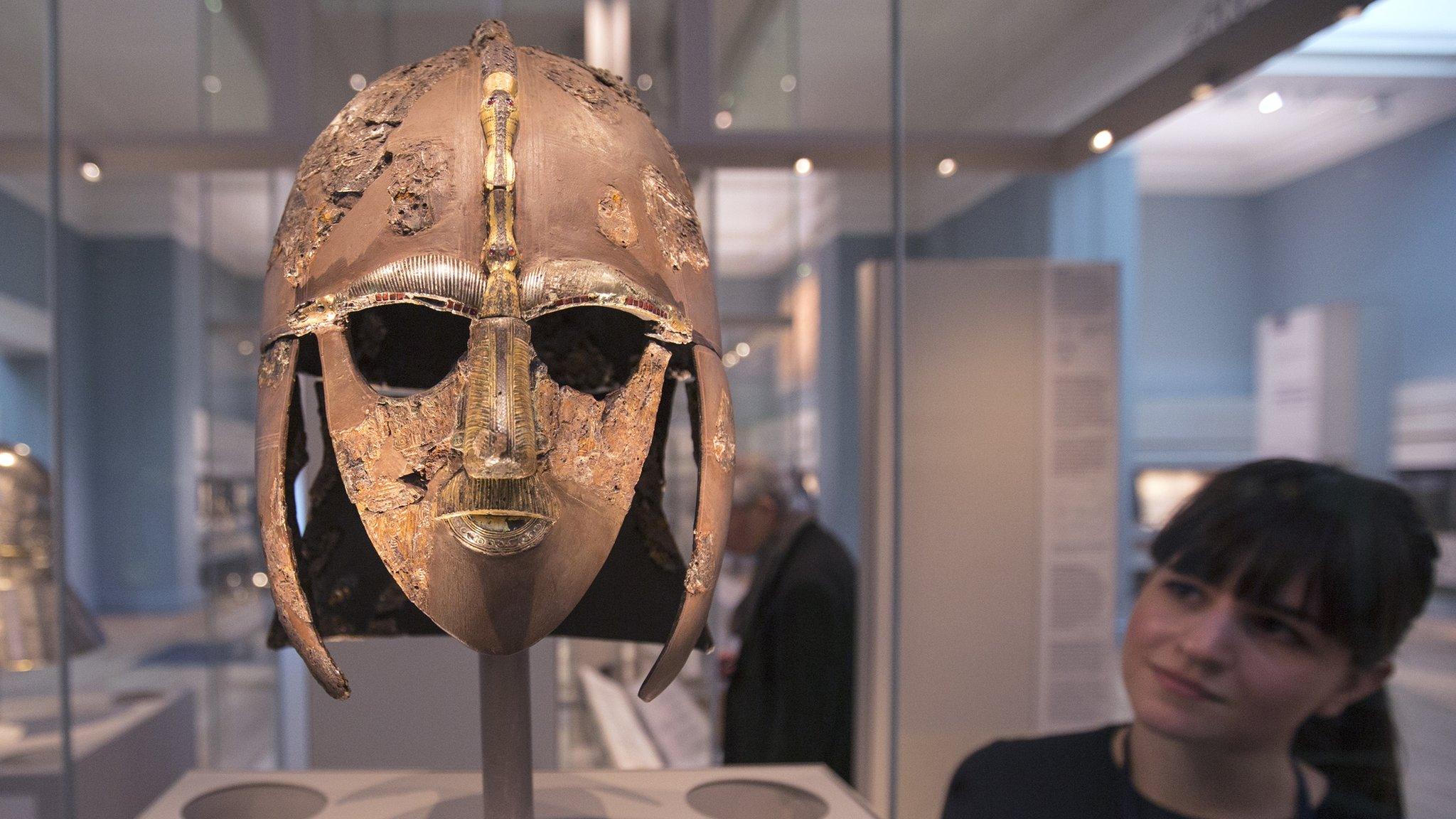Treasure finds add to 'picture of Anglo-Saxon palace'
- Published

Items declared treasure have been acquired by Ipswich Museum
Finds declared as treasure reveal more about what is believed to be a lost Anglo-Saxon royal palace, an archaeologist said.
Experts said remains dating from the 7th Century could be linked to the palace, in Rendlesham, Suffolk.
The items, including coins, parts of jewellery and an ingot, were found near Woodbridge.
Archaeologist Faye Minter said: "They add to the picture of what we have got for that high status 7th Century site."
The finds have been acquired by Ipswich Museum, said Ms Minter, of Suffolk County Council's archaeological unit.

A copper-alloy early medieval strap end is thought to have been used on the end of a belt
One of the items was a solid silver ingot, which she said could date from either the Viking or Anglo-Saxon periods.
Another item was an incomplete part of a piece of gold, which would have held a pendant in the 7th Century.
A copper-alloy early medieval strap end, which might have been used on the end of a belt, and a set of Roman coins were also found.
For more archaeology stories follow our Pinterest board, external
The finds were declared treasure at an inquest in Ipswich.
The Rendlesham site, which archaeologists think may have once been home to a royal palace or hall, is about four miles from the Sutton Hoo burial site.
The remains at the 120-acre (50-hectare) site were found with aerial photography and geophysical surveys.
It is thought Rendlesham and Sutton Hoo were intimately linked - with Sutton Hoo being the burial place of the king at Rendlesham.
The discovery at Sutton Hoo was made in 1939.
A viewing platform and walkway is being built to give people a clearer view of the historic Anglo-Saxon ship burial site.
- Published19 November 2015

- Published20 September 2016

- Published16 November 2016

- Published1 December 2016
